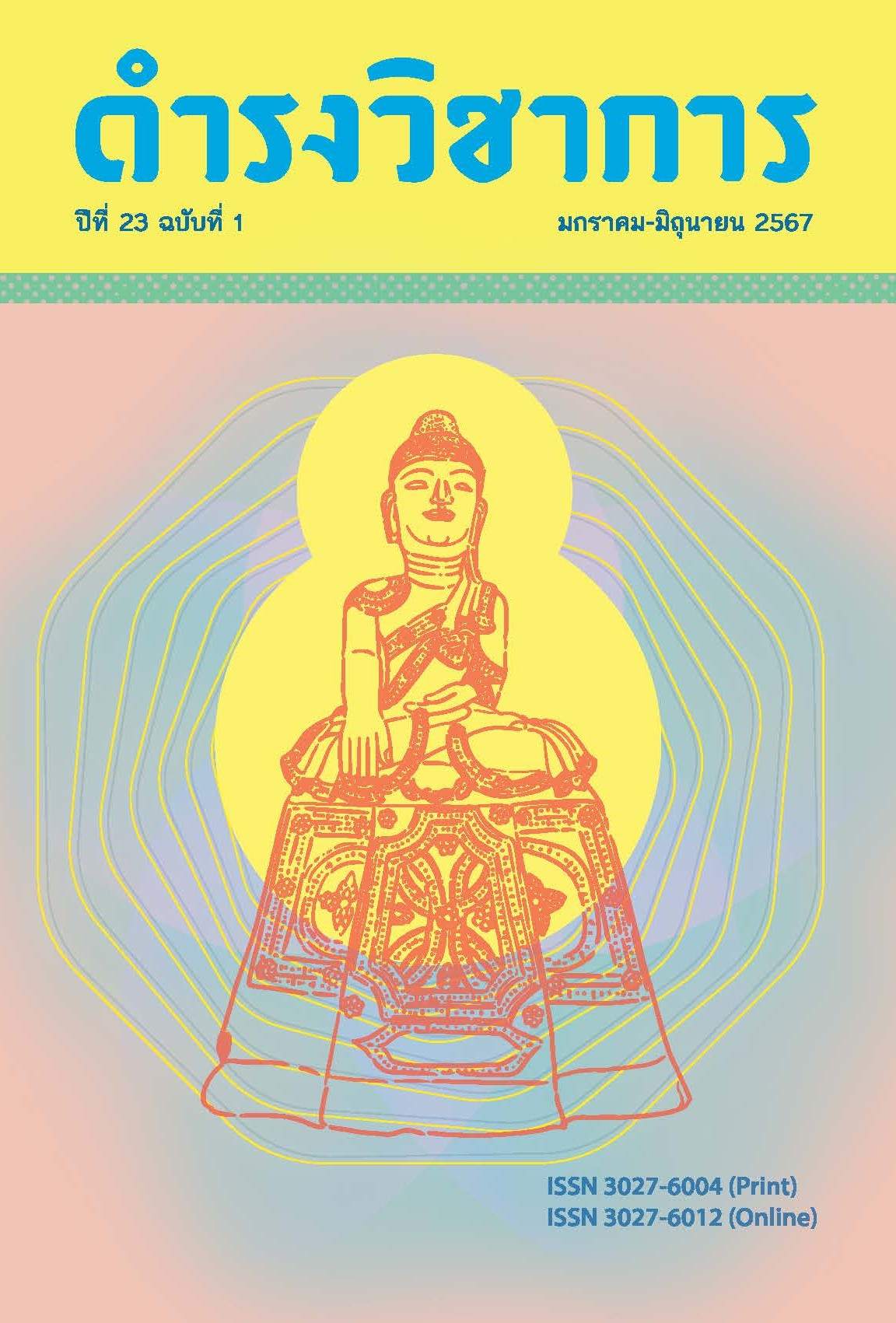Using Chinese Astronomy to Interpret the Architectural Design Concepts of Ratcha-Orasaram, Ratchasittharam, and Sudatsanadepwararam Temples
Keywords:
Ratcha-Orasaram, Ratchasittharam, Sudatsanadepwararam, Chinese astronomy, architectural investigationAbstract
Using Chinese astronomy, this study attempts to understand the architectural design concepts of Ratcha-Orasaram, Ratchasittharam, and Sudatsanadepwararam temples. At Ratcha-Orasaram temple, a sculptural representation of a rooster surrounded by a red circle symbolizes the Sun and conveys iconographic significance for Amitabha Buddha (Mahayana). There are 28 Chedi Rais (Thai pagodas), which represent the former Buddha, and 28 Meditation Pavilions of the Ratchasittharam temple which represent the 28 Chinese stars. The Sudatsanadepwararam temple has traditional Thai symbols depicting the sun and moon. A total of 28 Chinese pagodas represents 28 Chinese stars, resulting in all three Chinese auspicious light symbols (the sun, moon, and stars). In addition, these Chinese pagodas also represent the former Buddha of the Theravada religion.
References
ภาษาไทย
กรมศิลปากร, 2479. ประชุมพระราชปุจฉา ภาคปกิรณกะ. พระนคร: ศรีหงส์.
____________, 2509. ประวัติวัดราชสิทธาราม. พระนคร: กรมศิลปากร.
คณะผู้แปลสมัยรัชกาลที่ 1, 2557. ไซ่ฮั่น. กรุงเทพฯ: ยิปซีกรุ๊ป.
คณะผู้แปลสมัยรัชกาลที่ 2, 2514. พงศาวดารจีนเรื่องฮ่องสิน. กรุงเทพฯ: โรงพิมพ์ชุมนุมสหกรณ์การขายและ การซื้อแห่งประเทศไทย.
____________, 2556. เลียดก๊ก. กรุงเทพฯ: ยิปซีกรุ๊ป.
____________, 2558. ตั้งฮั่น. กรุงเทพฯ: ยิปซีกรุ๊ป.
ถาวร สิกขโกศล, 2556. “สุภาษิตขงจู๊บานแพนกและนางเคงเกียงสอนบุตร เป็นบทที่หกในโกบุญหวม.” วารสาร จีนศึกษา มหาวิทยาลัยเกษตรศาสตร์ 6 (6): 1-24.
ธนิต อยู่โพธิ์, 2504. ตำนานวัดราชโอรสาราม. กรุงเทพฯ: กรมศิลปากร.
ภาณุวงศ์มหาโกษาธิบดี, เจ้าพระยา, 2549. ไคเภ็ก. นนทบุรี: ศรีปัญญา.
วัดราชโอรสาราม, 2549. วัดราชโอรสารามราชวรวิหาร. กรุงเทพฯ: วัดราชโอรสาราม.
ศักดิ์ชัย สายสิงห์, 2549. “ประติมากรรม.” ใน ทองต่อ กล้วยไม้ ณ อยุธยา (บรรณาธิการ), สองศตวรรษวัด สุทัศนเทพวราราม ศูนย์กลางจักรวาล ศูนย์กลางพระนคร (หน้า 88-145). กรุงเทพฯ: สำนักผังเมือง กรุงเทพมหานคร.
ศานติ ภักดีคำ และ นวรัตน์ ภักดีคำ, 2553. เสริมสิริมงคล ยลศิลปะจีน 9 วัดไทยในกรุงเทพฯ. กรุงเทพฯ: อมรินทร์.
ศูนย์ข้อมูลสถาปัตยกรรมไทย, 2552. “สถาปัตยกรรมวัดสุทัศนเทพวราราม.” ใน ฝ่ายศิลปวัฒนธรรม มหาวิทยาลัยศิลปากร (บรรณาธิการ), งานวันพระบาทสมเด็จพระนั่งเกล้าเจ้าอยู่หัว ประจำปี 2552: พระนั่งเกล้าฯ กับความเป็นศูนย์กลางจักรวาลของวัดสุทัศน์ (หน้า 9-32). กรุงเทพฯ: อมรินทร์.
สำนักศิลปากรที่ 5, 2555. พระศรีอริยเมตไตรย: แนวคิด คติความเชื่อ และรูปแบบประติมากรรม. ปราจีนบุรี: ธุรการเจริญกิจ.
สุรศักดิ์ เจริญวงศ์, 2552. “คติความเชื่อเรื่องไตรภูมิในงานศิลปกรรมของวัดสุทัศนเทพวราราม.” ใน ฝ่าย ศิลปวัฒนธรรม มหาวิทยาลัยศิลปากร (บรรณาธิการ), งานวันพระบาทสมเด็จพระนั่งเกล้าเจ้าอยู่หัว ประจำปี 2552: พระนั่งเกล้าฯ กับความเป็นศูนย์กลางจักรวาลของวัดสุทัศน์ (หน้า 91-138). กรุงเทพฯ: อมรินทร์.
อชิรัชญ์ ไชยพจน์พานิช, 2549. “เรื่องของศิลปะจีนในวัดสุทัศนเทพวราราม.” ใน ทองต่อ กล้วยไม้ ณ อยุธยา (บรรณาธิการ), สองศตวรรษวัดสุทัศนเทพวราราม ศูนย์กลางจักรวาล ศูนย์กลางพระนคร (หน้า 146-180). กรุงเทพฯ: สำนักผังเมือง กรุงเทพมหานคร.
ภาษาต่างประเทศ
Crawfurd J., 1830. Journal of an embassy from the governor-general of India to the courts of Siam and Cochin China; Vol. I. 2nd edition. London: Samuel Bentley.
Roberts E., 1837. Embassy to the eastern courts of Cochin-China, Siam, and Muscat; in the U.S. sloop-of-war Peacock, David Geisinger, commander, during the years 1832-3-4. New York: Harper & Brothers.
Welch P.B., 2008. Chinese art: A guide to motifs and visual imagery. Tokyo: Tuttle publishing.
Williams C.A.S., 2006. Chinese symbolism and art motifs. 4th edition. Singapore: Tuttle publishing.
Downloads
Published
Issue
Section
License
Copyright (c) 2024 Damrong Journal of The Faculty of Archaeology Silpakorn University

This work is licensed under a Creative Commons Attribution-NonCommercial-NoDerivatives 4.0 International License.
บทความนี้เป็นผลงานของข้าพเจ้าแต่เพียงผู้เดียว และ/หรือเป็นผลงานของข้าพเจ้าและผู้ร่วมงาน ตามชื่อที่ระบุในบทความจริง และเป็นผลงานที่มิได้ถูกนำเสนอหรือตีพิมพ์ที่ใดมาก่อน





